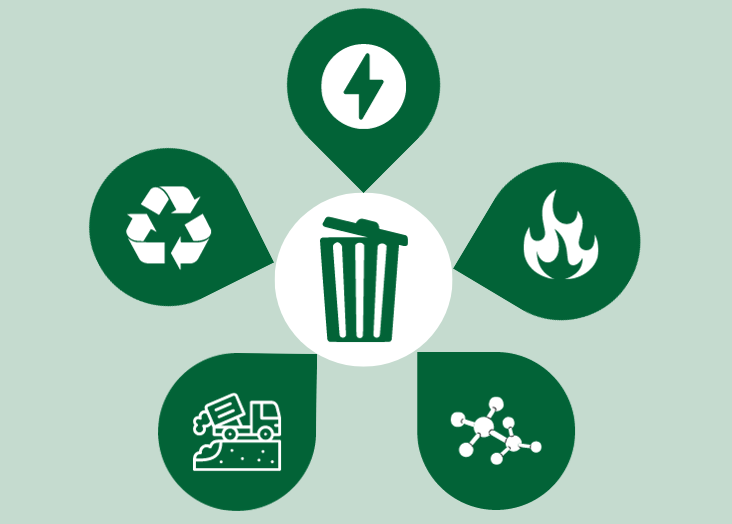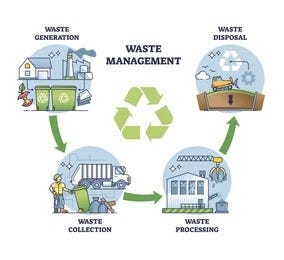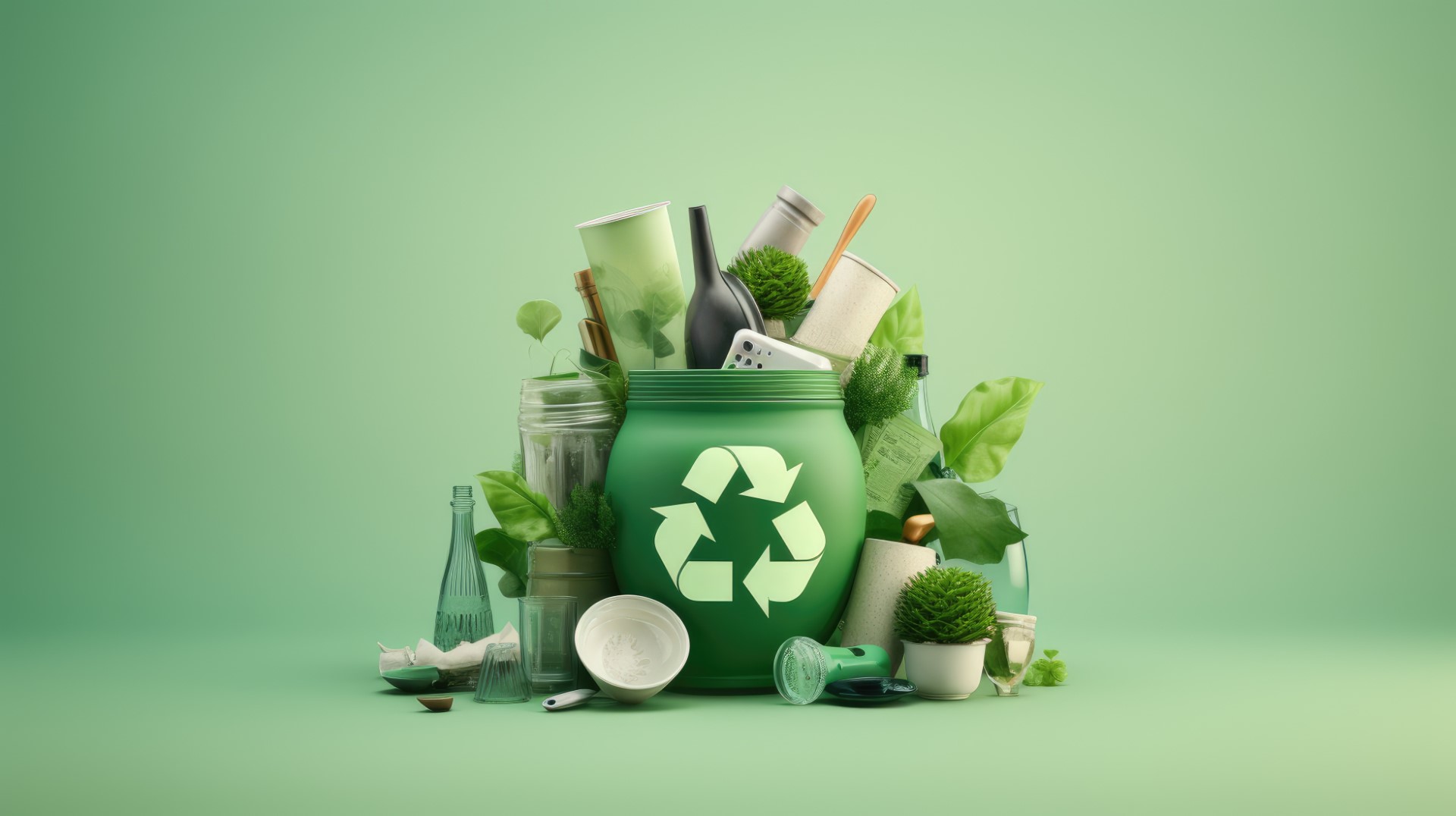Exploring Different Types of Waste in Modern Waste Monitoring Solution
The modern landscape of waste monitoring entails browsing a complicated range of waste kinds, each calling for specialized handling and disposal approaches to alleviate environmental impacts. Municipal strong waste, hazardous waste, digital waste, and natural waste each present distinct obstacles and chances for resource recuperation.
Local Solid Waste
Metropolitan solid waste, typically referred to as house garbage or trash, incorporates a range of disposed of products produced by residential, business, and institutional sources within a town. This waste stream generally includes items such as product packaging, food scraps, backyard trimmings, paper, plastics, fabrics, and thrown out household goods. The monitoring of metropolitan strong waste is a critical part of metropolitan planning and public health, demanding effective collection, transportation, and disposal systems.
Efficient waste monitoring systems are made to minimize environmental influence while optimizing source recovery. Composting organic waste, such as food scraps and yard trimmings, not only decreases garbage dump usage however likewise creates useful soil changes.
Municipalities need to additionally resolve the logistical and financial obstacles related to waste monitoring. Implementing pay-as-you-throw systems, enhancing public awareness, and buying technology can considerably enhance waste diversion rates. By integrating these practices, municipalities can foster sustainable neighborhoods, decrease greenhouse gas discharges, and save natural deposits.
Contaminated Materials

Reliable hazardous waste monitoring involves several crucial steps: recognition, partition, disposal, and therapy. Partition makes certain that unsafe products are kept individually from non-hazardous waste to avoid cross-contamination.
Regulatory structures, such as the Source Preservation and Recuperation Act (RCRA) in the USA, offer guidelines and criteria for contaminated materials administration. Adherence to these policies, coupled with advancements in waste therapy modern technologies, is crucial in minimizing the dangers associated with contaminated materials.
Digital Waste
Electronic waste, commonly described as e-waste, represents a rapidly expanding difficulty in waste management systems around the world. This kind of waste encompasses discarded digital gadgets and equipment such as smart devices, computer systems, tvs, and other digital devices. The fast pace of technical advancement, paired with lowering item life expectancies and consumer demand for the latest tools, has actually tremendously boosted the volume of e-waste produced annually.
E-waste is particularly bothersome as a result of its intricate structure, usually including harmful compounds like mercury, cadmium, and lead, which posture substantial environmental and health and wellness risks if not properly managed. On the other hand, e-waste also has useful products such as copper, gold, and silver, which can be recouped and recycled. The double nature of e-waste-- both important and dangerous-- requires specific handling, recycling, and disposal processes.
Efficient e-waste monitoring entails stringent regulatory frameworks, robust collection systems, and advanced recycling innovations. Public understanding and engagement are crucial, as incorrect disposal techniques, such from this source as illegal disposing and informal recycling, worsen ecological contamination and carcinogen. As a result, boosting e-waste management methods is essential for mitigating environmental influence and recovering useful sources in a significantly digital world.

Organic Waste
Organic waste, comprising cooking area scraps, yard trimmings, and farming residues, stands for a substantial section of the worldwide waste stream. This kind of waste is naturally degradable, meaning it can be damaged down by microorganisms into less complex organic substances. In spite of its potential for all-natural decomposition, inappropriate administration of natural waste can cause adverse ecological impacts, consisting of the discharge of greenhouse gases such as methane, which contribute to environment modification.
Effective monitoring of natural waste is important for lessening these environmental effects (recycling lives services). Composting is an extensively adopted technique, changing organic waste into nutrient-rich garden compost that can boost dirt health and agricultural efficiency. In addition, anaerobic digestion is an emerging innovation that transforms natural waste right into biogas, a renewable energy source, and digestate, which can be made use of as fertilizer
Municipalities and waste administration entities have to implement robust organic waste collection and treatment programs to optimize the advantages of these procedures. Public education campaigns can likewise play a crucial role in encouraging households and businesses to separate natural waste from various other sorts of waste. By focusing on the administration of natural waste, cultures can minimize garbage dump use, lower greenhouse gas discharges, and produce useful results for agricultural use.

Cutting-edge Waste Monitoring
In the realm of waste management, cutting-edge approaches are changing just how cultures handle their refuse, going for sustainability and efficiency. These improvements encompass a range of innovations and practices that boost reusing prices, decrease landfill try this web-site reliance, and lower ecological impact. One popular innovation is the implementation of smart waste containers equipped with sensing units that keep an eye on fill levels and enhance collection routes. This not only reduces gas usage yet additionally lessens greenhouse gas discharges.
One more notable growth is the fostering of waste-to-energy (WtE) technologies. By transforming non-recyclable waste right into usable power with processes such as incineration and anaerobic food digestion, WtE minimizes garbage dump burden and gives a renewable resource source. In addition, improvements in chemical recycling allow for the failure of complicated plastics into their original monomers, making it possible for the production of brand-new, high-grade plastic items.
In addition, the round economic situation version is gaining traction, highlighting the layout of products and systems that prioritize reusability and source efficiency. This alternative strategy encourages markets to minimize waste generation from the beginning. Via these innovative methods, modern-day waste management systems are not just attending to the prompt challenges of waste disposal however additionally leading the way for an extra lasting future.
Conclusion
A thorough understanding of community strong waste, contaminated materials, electronic waste, and natural waste, paired with the implementation of cutting-edge waste management options, is critical for minimizing environmental influences. Incorporating technologies such as wise waste bins and waste-to-energy systems can boost performance and sustainability. Effective waste management approaches not only foster source recovery yet also advertise public recognition and engagement, eventually contributing to the development of a round economic situation.
The modern landscape of waste monitoring involves browsing a complex selection of waste types, each requiring specialized handling and disposal approaches to reduce environmental influences. Community strong waste, hazardous waste, electronic see post waste, and natural waste each existing unique obstacles and possibilities for resource recovery.Electronic waste, typically referred to as e-waste, represents a swiftly expanding difficulty in waste management systems worldwide. Through these innovative strategies, modern-day waste monitoring systems are not only attending to the instant challenges of waste disposal but also leading the way for an extra sustainable future.
An extensive understanding of local strong waste, unsafe waste, electronic waste, and natural waste, coupled with the implementation of ingenious waste administration solutions, is important for mitigating ecological impacts. (recycling lives services)